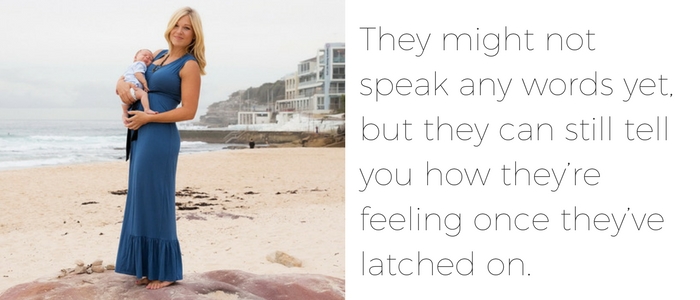
@annakooiman at Bondi Beach
Breastfeeding can be a magical bonding experience between a mother and a child. Some women make breastfeeding look effortless while others have a little difficulty getting into the rhythm of things - and both are totally fine. Every new mum is different.
Although at first it may be overwhelming because of the emotional, mental and physical changes that are occurring, you will quickly learn and become comfortable and empowered by the process. Because like anything you’re new at, sometimes it’s a matter of patience and trial and error and eventually you will know what works for you and your baby.
If you’re just getting started, here are seven tips to help you and your bub get a head start to enjoying the benefits of breastfeeding.
1. Look out for hunger signs
Your baby will show early signs of hunger that will give you an indication of when to start feeding. Babies are more alert and active when they’re hungry, so try to notice particular movements known as ‘rooting signs’. Rooting signs are when babies put their hands to their mouths or turn their head looking for the breast. When something touches their cheek and they turn toward it, that’s the best time to offer your breast and get them to latch on quickly.
These early stages of hunger are when it’s easier to begin breastfeeding. Crying is a late stage of hunger, and when babies cry it’s harder for them to latch. These signs and queues will be easier to pick up on over time.
2. Find a quiet space
Until it becomes second nature to you, you can lessen the pressure of breastfeeding by finding a quiet area where you can concentrate. Ditch the TV, phone or any other distractions within the first few weeks. You can even opt for playing soft music to help you both relax.
3. Find a comfortable position
Use pillows to rest your arms on and raise your baby to a secure and snug height. If you’re breastfeeding your first child then you’re both beginners in the cycle and need some time to adapt. Take your time to find the right position and get in sync with your baby.
If you aren’t a first-time mum, don’t forget that at least one of you is a beginner. All babies are different and may latch on differently in comparison to their siblings.
4. Take your time and learn your baby’s behaviour
It will take practice to find the right process and technique. Because of this, practice session-wise and week-wise what works and what doesn’t. Let your baby guide you. They might not speak any words yet, but they can still tell you how they’re feeling once they’ve latched on.
Some will feed from just one breast at each feeding, while some may switch from one to the other.
If you think your baby may still be hungry, keep going until they stop sucking and swallowing. When they’re starting to get full, you will notice that their suck-swallow pattern will begin to slow down. When they’re finished, they will let go of your breast and unlatch.

5. Switch feeding sides
Get the most out of the feed by starting on the breast that wasn’t nursed during the last session or the one that didn’t drain completely. You can remind yourself which is which by placing a nursing cup or tissue into one of your bra cups. Ideally, each feeding should end in at least one fully drained breast. This is actually more important than switching, because hind milk (the last bit of milk) is more rich in fats and calories, and is the most nutritious for your baby.
6. Snack to keep your energy up
A woman’s body works hard to produce breast milk, so it’s important to keep revitalised by eating healthy snacks and dishes. You may naturally feel hungrier anyway, so don’t ignore those tummy grumbles because breastfeeding women need an extra 500-600 calories per day. You may like to try some of these foods to keep your nutrients up:
- Starchy carbs such as wholemeal pasta or rice
- Fresh fruits
- Portioned fish such as tinned mackerel or sardines
- Vegetables (chopped up with dip or as a soup as good options)
- Meat or hard boiled eggs
- Two servings of dairy per day
- Nuts, seeds or dried fruit
- An extra 700ml of water, milk or fresh juice per day
7. Have them sleep close by
Waking up from sleep to breastfeed is difficult. Make it easier for you and your baby by having the bassinet or crib within a safe distance from you in your bedroom. Being within close vicinity reduces the stress and pressure of feeding them during the night. Also remember that skin-to-skin contact will soothe crying and keep them stable.
Becoming a breastfeeding expert
No new mum can be expected to be an expert at breastfeeding immediately. Every baby will behave differently and want different things. Take your time to learn your baby’s behaviour and eventually you will find the experience enjoyable and highly rewarding.
